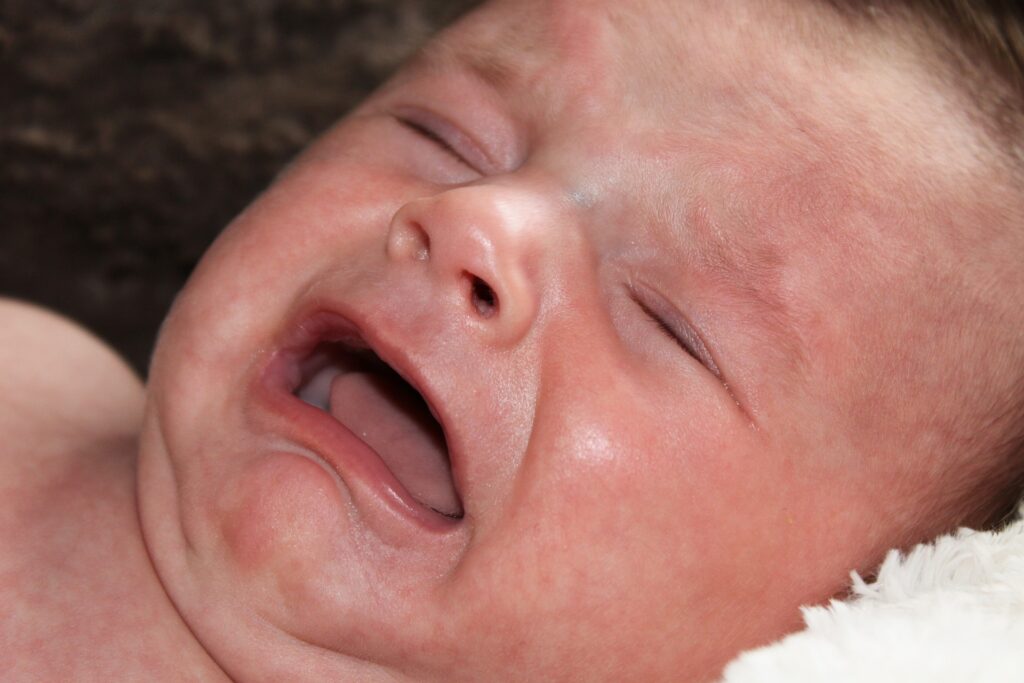
Myth #1: All breastfeeding problems originate in the baby’s mouth
In my recent interview with Carol Gray, I led with this question: Is craniosacral therapy just snake oil?
Where it comes to complementary and alternative (CAM) therapies, there are plenty of myths floating around. Not surprisingly, there are many myths about craniosacral therapy, too, especially where it pertains to breastfeeding.
Problems that are visible in or around the mouth appear as obvious explanations for why breastfeeding might not be going well. But for just a moment, take a step back and think about this in a non-breastfeeding context.
Do you read as many words a minute when you have a headache? Do you find it difficult carrying on a conversation when your stomach aches? And — my favorite — does your arthritic left knee get wonky when your vertebrae are misaligned?
Sometimes, the explanation or help for a problem is not localized, or obvious.
Myth #2: Babies have a preferred side because it gives them more milk
Now let’s think about this! Do babies prefer one side because it gives them more milk, or is there more milk on that side because they prefer it?
Carol explained that just as the body seeks chemical balance, it also seeks structural balance. Carol’s mini lesson in anatomy related trauma to the functionality of the cranial nerves — notably cranial nerves #9, 10, and 11. Although those nerves are not directly related to suck-swallow movements — breastfeeding efforts may be impeded if they are traumatized.
Myth #3: Craniosacral therapy is expensive
Unlike many other complementary and alternative therapies, craniosacral therapy is frequently offered by professionals who have other credentials. So, if you are seeking services from one who is certified only in craniosacral therapy, you’ll be paying less than if the treatment is provided by someone who has multiple certifications or licenses.
For example, if the practitioner who provides your craniosacral therapy is also licensed as a chiropractor (DC) or an osteopath (DO) or a medical doctor (MD), they will charge fees that they would charge for any other service they render.
Myth #4: Craniosacral therapy is evidence-based
Oh, sorry, but as much as you might love craniosacral therapy, there just aren’t any randomized controlled trials to prove that it results in better clinical outcomes. That being said, I would urge you think about what type of “evidence” you need to see in order to be convinced.
Take a look at Carol in action with a newborn. In the beginning, the baby is very stiff, fussy and generally difficult to console. Then, you’ll see Carol putting slight pressure on the baby. Within a few minutes, you’ll see the baby’s body completely relax, and become almost limp-like.
Carol explained that because of this deep relaxation, babies often sleep so well after the treatment that parents need to awaken them. I can tell you, after I experience craniosacral therapy myself, I fall into a very relaxed state, and a peaceful sleep.
What about the placebo effect, you might ask? Good question! I’m a big believer that the placebo effect exerts a greater effect than most of us could possibly understand. (I have an autographed copy of Dr. Joe Dispenza’s book, You Are the Placebo: Making Your Mind Matter.)
Myth #5: Craniosacral therapy hurts
Well, no. Carol typically applies only about 5 grams of pressure. That’s about the weight of a US nickel — a very small amount of pressure. And, I can tell you from having had it done myself, it is almost imperceptible.
No one would say that craniosacral therapy is a cure-all for any ailment. But before you dismiss it as snake oil, consider that it’s a completely non-invasive, fairly inexpensive treatment to try. To my knowledge, there’s no harm in craniosacral therapy.
If you’ve listened to my discussion with Carol Gray, what do you think? Share your thoughts in the comments below!

does anyone know of any upcoming conferences on the topic of Craniosacral therapy?
Maryann, good question! I’m not aware of any, but will keep my eye out. This is an important topic, and one that is not well understood among either parents or providers.
Maryann, here you go! I see one is coming up in September, but it seems like it’ more geared for people who are already certified. Nonetheless, here’s what I found: https://www.craniosacraltherapy.org/
It’s looking scary. Can you post a detailed article which explains the benefits of craniosacral therapy.
Anna, wish I could! But pretty much, the extent of my knowledge is in the post you just read. If you are looking for more information, I did an extensive podcast with Carol Gray, who is a certified craniosacral therapist. You may find it helpful to listen, she gives many details.